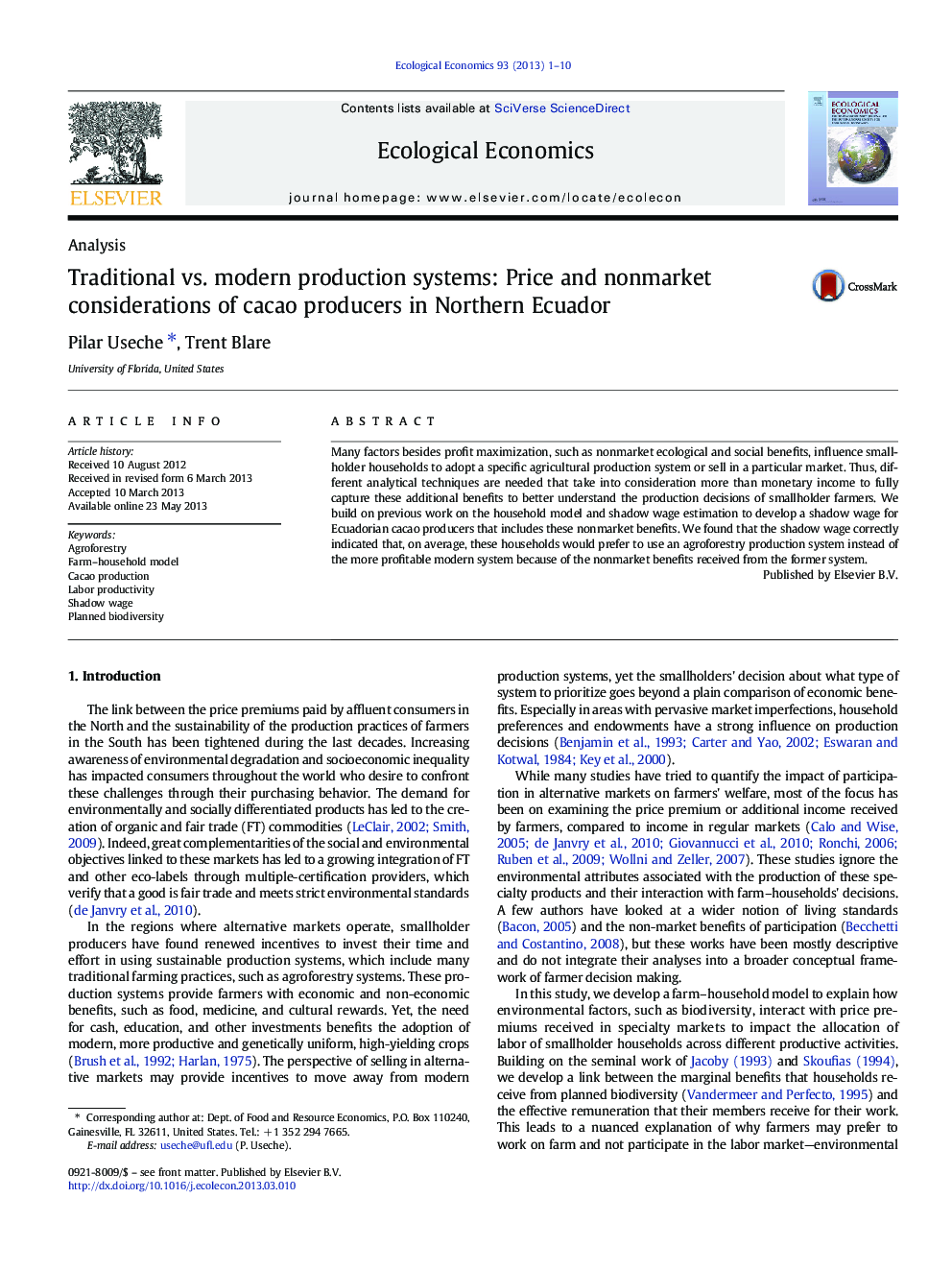| کد مقاله | کد نشریه | سال انتشار | مقاله انگلیسی | نسخه تمام متن |
|---|---|---|---|---|
| 5049937 | 1476386 | 2013 | 10 صفحه PDF | دانلود رایگان |
- We analyze the importance of biodiversity from intercropped plants in cacao production.
- We model the shadow wage of labor in terms of both cacao and biodiversity productivity.
- Important trade-offs between cash and nonmarket incentives exist.
- Traditional production methods are optimal when biodiversity is valued and liquidity constraints do not bind strongly.
Many factors besides profit maximization, such as nonmarket ecological and social benefits, influence smallholder households to adopt a specific agricultural production system or sell in a particular market. Thus, different analytical techniques are needed that take into consideration more than monetary income to fully capture these additional benefits to better understand the production decisions of smallholder farmers. We build on previous work on the household model and shadow wage estimation to develop a shadow wage for Ecuadorian cacao producers that includes these nonmarket benefits. We found that the shadow wage correctly indicated that, on average, these households would prefer to use an agroforestry production system instead of the more profitable modern system because of the nonmarket benefits received from the former system.
Journal: Ecological Economics - Volume 93, September 2013, Pages 1-10
